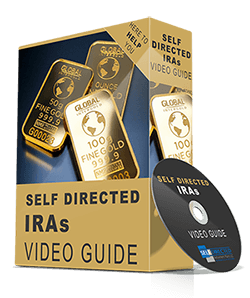Retirement planning is important, and it should be done strategically so that when you finally get free from years of hard work, you have a nice, comfortable fund waiting for you. As crucial as retirement planning is, it can become overwhelming, too, especially with so many options and plans available for retirement. Two of the retirement plans that are popularly available are 403(b) and Roth IRA.
Sometimes, choosing between 403(b) vs. a Roth IRA becomes confusing. 403(b) and Roth IRAs let you save for retirement and reduce the taxable income.
We will discuss what is a 403(b), what is a Roth IRA, and which to invest in, depending on your goals and needs.
What is a 403(b)?
403(b) is a retirement plan offered to non-profit organizations, tax-exempt entities, hospitals, and public school employees. Basically, most State and Local government employees are eligible to contribute to a 403(b).
All employees in the above category can contribute to their 403(b) plans. Such contributions are known as elective deferrals. Any eligible employee can contribute a part of his salary to his 403(b) plan as an investment for his retirement.
This contribution is made pre-tax, which means the contribution amount reduces the salary. Thus, the taxable salary is reduced. Tax is charged when the contribution is withdrawn post-retirement. 403(b) gives employees the advantage of reduced taxable income and deferred taxation.
What is a Roth IRA?
A Roth IRA is an individual retirement account available to all individuals whose incomes fall under the plan’s income limit. A person does not need an employer to invest in a Roth IRA. Instead, individuals set up IRAs by coordinating with their bank or other financial institutions.
At certain times, employers or companies do not offer retirement plans to their employees. Such employees can also put their savings in IRAs.
Contributions to Roth IRAs are made post-taxation.
This means that withdrawals from the account are not subject to taxes if the plan has been open for at least five years and the account holder is above 59½ years of age.
403(b) vs. Roth IRA: Major differences
Although 403(b) and Roth IRAs are tax-advantaged retirement savings plans, they differ significantly.
- Eligibility Requirements: The eligibility criteria for 403(b) and Roth IRA are very different. While any individual whose annual income is within the allowed limits can contribute to a Roth IRA, to be eligible to contribute in 403(b), you must be an employee of a hospital, public school, or non-profit organization.
- Contribution Limits: 403(b) contribution limits are similar to that of 401(k). In 2024, the limit is $23,000.Roth IRA contributions are not as high as 403(b)s. The 2024 limit for Roth IRA contributions is $7,000.
- Catch-Up Contribution Limits: While both 403(b) and Roth IRAs allow catch-up contributions to individuals over 50, the amount allowed is very different. In 2024, the catch-up contribution limit for 403(b) is $7,500 and the same for a Roth IRA is $1,000.
- Additional Contributions: In 403(b), employers can match the contribution of employees as per the allowed limit. Additionally, if an individual has been with the same employer for at least 15 years, they get a lifetime catch-up provision benefit. It allows the employee to contribute $3,000 additional every year for the next five years, i.e., a total of $15,000 extra. Since a Roth IRA is not tied to any specific employer, additional contributions are not possible.
- Taxes and Withdrawals: As contributions to 403(b)s are made pre-tax, individuals save on the taxes when they make the contributions. However, they must pay tax on contributions and earnings whenever they withdraw post-retirement. Anyone who withdraws from 403(b) before turning 59 ½ may be charged a 10% early withdrawal penalty. Contributions to Roth IRAs are made post-tax. So, withdrawing after retirement from a Roth IRA is tax-free. However, if withdrawn before the age of 59 ½ and within the five-year holding period, the individual may be charged a 10% penalty.
- Investment Options: 403(b)s have limited investment options compared to Roth IRAs. Under 403(b), you can only invest in annuities and mutual funds, but with Roth IRAs, you can invest almost anywhere, such as mutual funds, stocks, bonds, index funds, etc.
| CRITERIA | 403(b) | Roth IRA |
|---|---|---|
| Eligibility | All public school, non-profit organization, or hospital employees whose employer offers 403(b) | Any individual whose annual income is within the allowed limit. |
| Contribution Limits | $23,000 in 2024 | $7,000 in 2024 |
| Catch-Up Contribution Limits (Aged 50 and up) | $7,500 in 2024 | $1,000 in 2024 |
| Additional Contributions | Employer contribution + For any employee who is with the same employer for more than 15 years, $3,000 additional every year for the next five years, i.e. a total $15,000 extra. | No additional contributions possible. |
| Taxes and Withdrawals | Contributions are done pre-tax. So, taxation on contributions and earnings at the time of withdrawal. Early withdrawal penalty of 10% is charged when withdrawn before the age of 59 ½. | Contributions made are post-taxation. Hence, no tax is charged at the time of withdrawal. Early withdrawal penalties apply only to earnings withdrawn before age 59 ½. |
| Investment Options | Have limited investment options, only annuities and mutual funds. | Wider investment options. You can invest in mutual funds, stocks, bonds, index funds, etc. |
403(b) vs Roth IRA: Pros
Both 403(b) and Roth IRAs have their advantages.
403(b) Advantages
- Most employers will match a part of the employee’s contribution.
- An employee’s annual income does not affect his eligibility to contribute.
- Tax benefits are enjoyed in the same year of the contribution in the form of reduced taxable income.
- The contribution limits are higher.
- The contribution is automatically deducted from the employee’s paycheck.
Roth IRA Advantages
- Any individual can contribute to a Roth IRA; you do not need an employer.
- Since Roth IRAs are not tied to employers, you do not need to roll over when you change jobs.
- Much wider choice of investments compared to 403(b)s.
- Withdrawing upon retirement will be tax-free if you follow all the rules.
- You can withdraw the contributions anytime without penalty.
403(b) vs Roth IRA: Cons
There are a few disadvantages to both of them, too
403(b) Disadvantages
- Very limited investment options.
- You will be penalized for early withdrawals of contributions and earnings.
- Contributions and earnings are taxed as ordinary income at withdrawal time.
Roth IRA Disadvantages
- You can only contribute to a Roth IRA if your income falls within the allowed limit.
- The contribution limits are lower as compared to 403(b)
- You receive tax benefits only after retiring.
- If earnings are withdrawn before the age of 59 ½ and within five years, a 10% penalty is charged.
403(b) vs Roth IRA: Which Is Better?
As seen above, both a 403(b) and a Roth IRA have advantages and disadvantages. There is no right or wrong choice; it depends on your financial goals, retirement needs, and how much you can contribute. If you are eligible for both, you do not have to choose between the two and can contribute to both if you wish to.
Investing in both lets you take advantage of both plans and have multiple retirement accounts.
If you are over 50 and have worked with the employer for more than 15 years, you can take advantage of additional contributions allowed under 403(b) to increase your retirement funds.
But if you want to invest in more diverse financial assets, you should consider a Roth IRA. It also makes sense if you want to switch jobs, as a Roth IRA will give you more flexibility.
Final Thoughts
Retirement planning requires a good strategy and smart financial planning. Both 403(b) and Roth IRAs offer tax advantages to the contributors. While they differ in many aspects, such as eligibility, contribution limits, taxation, etc., they both have advantages.
Whenever you decide to start contributing to any or both or need clarification on 403(b) vs. Roth IRA, contact us and we will be happy to make a retirement plan that suits your needs and fulfills all your requirements.
Have questions? Contact us for personalized assistance with your 403(b) and Roth IRA.
FAQs
Can you have both a 403(b) and a Roth IRA?
Yes, you can have both a 403(b) and a Roth IRA. You can contribute to the 403(b) plan if your employer offers it, and if your income falls within the limits allowed by the Roth IRA, you can also contribute to it.
Should you roll over your 403(b) to a Roth IRA?
If you are looking for wider investment options, tax-free withdrawals after retirement, and you change your job frequently, then you should roll over to a Roth IRA.
Got More Questions?

My goal is to assist clients/investors in their quest for financial freedom and creating generational wealth through one on one consultation and an abundance of online tools to educate. For the past 5 years I have been a private pension plan consultant with Self Directed Retirement Plans working directly with my partner Rick Pendykoski (owner) or you can .




